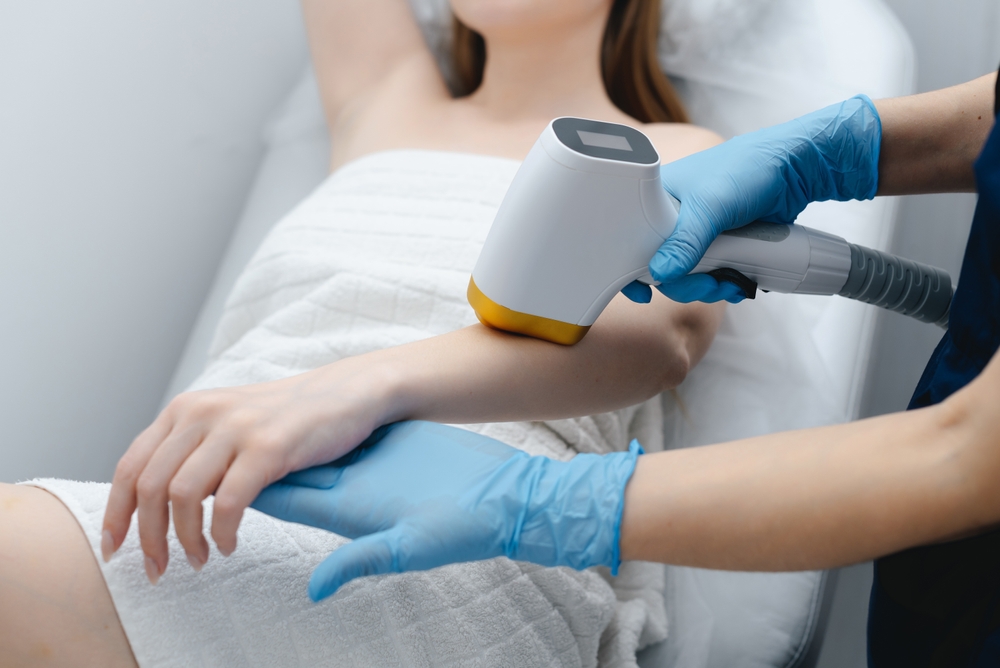Revolutionize Your Complexion with Laser Skin Therapy
Discover how modern laser skin therapy is reshaping dermatology by treating everything from fine lines and sun damage to acne scars and pigmentation concerns. This advanced approach uses targeted light energy to trigger collagen, fade dark spots, and refine texture—learn what to expect, potential risks, and how to choose the right clinic for lasting results.

Laser-based skin treatments have become a cornerstone of contemporary dermatology, offering targeted solutions for a wide array of cosmetic and medical concerns. By delivering focused light energy to specific skin layers, lasers can stimulate regeneration, break down unwanted pigment, and smooth texture—making them an attractive option for anyone seeking visible improvement without extensive surgery.
What skin issues can laser therapy address?
Laser skin therapy is highly adaptable and can be used for many common concerns:
- Fine lines and wrinkles: Certain lasers promote collagen remodeling and tighten skin, helping to diminish the look of aging.
- Acne and acne scars: Some laser systems reduce active inflammation and oil production, while resurfacing approaches help soften pitted or textured scars.
- Sun damage and uneven tone: Lasers can target sunspots and areas of discoloration to restore a more uniform complexion.
- Pigmentation problems: Excess melanin, including melasma and stubborn dark spots, can be broken down by pigment-specific devices.
- Enlarged pores and skin texture issues: Fractional or resurfacing lasers can smooth roughness and reduce pore visibility.
- Rosacea and visible blood vessels: Vascular lasers reduce redness and shrink dilated capillaries in many cases.
- Unwanted hair and tattoos: Specialized lasers offer long-term hair reduction and can fragment tattoo ink for fading or removal.
Clinicians choose among technologies such as CO2 lasers (often ablative and used for significant resurfacing), fractional lasers (which treat micro-columns of skin to balance results and downtime), and pulsed dye lasers (effective for vascular concerns). For tattoo removal and pigmented lesions, Q-switched or picosecond lasers may be used; practitioners match the device to the target and the patient’s skin type.
What happens during a treatment session?
A typical appointment follows a predictable sequence designed for safety and comfort:
- Consultation: Your provider evaluates your skin, reviews medical history, and outlines realistic expectations and a recommended plan.
- Preparation: The area is cleansed; depending on the procedure, a topical anesthetic may be applied to reduce discomfort.
- Protection: Both patient and clinician wear protective eyewear to guard against laser light exposure.
- Treatment: The practitioner delivers laser pulses across the treatment area. Session length varies—from a few minutes for small spots to an hour or more for full-face resurfacing.
- Aftercare: Cooling gels, ointments, or dressings may be applied. Providers give detailed home-care instructions and schedule follow-up visits.
Results can be immediate in some cases (for example, reduced redness after vascular treatments) but more commonly develop over weeks to months as collagen rebuilds and pigment clears. Many conditions require multiple sessions spaced over several weeks for best outcomes.
Potential side effects and how to reduce risk
When performed by experienced professionals, laser therapy is generally safe, but side effects can occur:
- Redness and swelling: These are common and usually resolve within days to a week depending on intensity.
- Pigment changes: Treated skin may temporarily darken or lighten; rare cases of permanent hypopigmentation or hyperpigmentation can occur.
- Scarring: Uncommon when aftercare is followed, but possible—especially with aggressive treatments or improper wound care.
- Infection: Any procedure that disrupts the skin barrier carries a small infection risk; following post-procedure instructions minimizes this.
- Burns: Incorrect settings or improper technique can cause burns, underscoring the importance of qualified providers and calibrated devices.
To reduce these risks, choose board-certified dermatologists or trained laser specialists, confirm the clinic uses FDA-cleared equipment, and adhere strictly to pre- and post-treatment recommendations (such as sun avoidance and using prescribed topical agents).
Choosing the right laser and clinic
Selecting the proper device and provider is crucial for safe, effective results. Consider the following:
- Credentials and experience: Seek board-certified dermatologists or physicians with a documented history of laser procedures.
- Technology: Ask which laser models are used and whether they are appropriate for your skin type and concern.
- Customization: Good clinics tailor protocols (energy settings, number of passes, downtime expectations) to the individual rather than offering a one-size-fits-all plan.
- Before-and-after photos and reviews: Real patient results and testimonials provide insight into outcomes and patient satisfaction.
- Consultations: Meet with multiple practices if needed to compare plans, ask about expected sessions, downtime, and potential side effects.
- Cost transparency: Understand the full cost including follow-up visits, maintenance treatments, and any necessary topical or prescription products.
| Provider | Services Offered | Key Features/Benefits |
|---|---|---|
| Skin Laser Clinic | Acne treatments, Anti-aging resurfacing, Pigmentation correction | Modern laser platforms, Individualized treatment plans |
| Advanced Dermatology Center | Laser hair removal, Tattoo removal, Skin resurfacing | Board-certified dermatologists, Multiple laser options |
| MedSpa Laser Solutions | Wrinkle reduction, Scar revision, Rosacea therapies | Combination treatments, Flexible appointment scheduling |
Cost disclaimer: Treatment prices vary depending on the clinic, device used, treatment area, and number of sessions. Request a detailed quote during consultation.
Final thoughts
Laser skin therapy offers a versatile toolkit for improving texture, tone, and specific dermatologic issues. When matched correctly to your skin type and concerns, lasers can produce transformative results with relatively predictable recovery. Always consult a qualified specialist to review options, expected outcomes, and any risks so you can make an informed decision about treatment.
This article is for informational purposes only and should not be considered medical advice. Please consult a qualified healthcare professional for personalized guidance and treatment.






